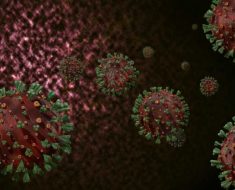
- A new study showed that eating more than one weekly serving of red meat may raise type 2 diabetes risk.
- Consuming more plant-based protein sources in place of red meat may lower the risk of developing type 2 diabetes.
- A high BMI is a risk factor for diabetes, and plant-based diets are associated with lower body weight.
With cases of type 2 diabetes on the rise in the United States, this health condition is becoming a serious health concern. Diet is one factor that plays a major role in the development of type 2 diabetes.
According to a new study, people who eat just two servings of red meat per week may have an elevated risk of developing type 2 diabetes compared to those who eat fewer servings.
The results of the study also indicated that eating more plant-based foods such as nuts and legumes instead of red meat was linked to a lower risk of type 2 diabetes.
“Our findings strongly support dietary guidelines that recommend limiting the consumption of red meat, and this applies to both processed and unprocessed red meat,” lead author Xiao Gu, postdoctoral research fellow in the Department of Nutrition, said in a press release.
Why red meat raises type 2 diabetes risk
One of the reasons is that red meat contains more saturated fat compared to other protein sources.
“Saturated fat may affect beta cell function and insulin sensitivity, which in the longer term might lead to hyperglycemia/diabetes,” said Dr. Mireille Serlie, Ph.D., an endocrinologist with Yale School of Medicine.
“Also, saturated fat can affect brain areas that regulate food intake,” she told Medical News Today.
Serlie explained that eating too much saturated fat for a longer period of time, and especially in combination with sugar, can negatively impact the brain’s ability to adjust food intake to caloric needs, resulting in overeating.
As noted by the researchers, BMI is linked to red meat intake and type 2 diabetes.
Looking at caloric intake in the different cohorts (table 1 in the paper), people who reported the highest intake of red meat also seem to eat more calories, Serlie added.
Ellen Liskov, registered dietitian at Yale New Haven Hospital, who was not involved in the study, agreed that eating red meat, especially processed red meat such as hot dogs, bacon, and sausage, is associated with a higher saturated fat intake, which can make an individual more insulin resistant and reduce how well their pancreas produces insulin.
“Individuals who have a higher intake of red meat are also more likely to have lower intakes of healthy fats that may promote good insulin sensitivity and glucose uptake. Other factors about high red meat/processed meat intakes that are less well known are the relationships between eating more iron or nitrates (processed meats) affects risks,” Liskov added.
It’s also important to note that in this study, one serving of unprocessed red meat is 85 grams. This is equal to about 3 oz or the portion size of a deck of cards.
Benefits of a plant-based diet
One of the other main findings of this study was replacing red meat with plant-based protein sources, such as nuts and legumes, may reduce the risk of type 2 diabetes.
“Plant-forward diets, including vegan diets, are associated with lower body weight in general, with elevated body weight from body fat being a risk factor for diabetes development,” said Liskov.
In this study, nuts and legumes were the plant protein sources that lowered the risk of diabetes.
“Nuts have healthy fats, including polyunsaturated fat and are low in saturated fat. Legumes are a ‘low glycemic index‘, resistant starch /slow to digest starch food and are also very low in saturated fats (the dietary nutrient that is correlated with insulin resistance as above). Well-planned plant-based diets are low in saturated fat, high in fiber, focus on healthy fats, and a wide spectrum of antioxidant nutrients,” Liskov said.
How to incorporate more plant-based foods into your diet
“A terrific public health campaign is ‘Meatless Monday‘. That could be a great way to start,” said Liskov.
It’s also important to be mindful of portion size and how to distribute the different food groups.
“Another way is by making meat (or animal protein) about ¼ of the plate but shifting to more vegetables and fruits. Foods like beans, lentils, pastas made from beans/lentils are easy and affordable. Snack on fruits, nuts, seeds.”
— Ellen Liskov, registered dietitian
In a recipe that calls for ground meat, you can cut back on the meat and use some finely chopped cooked mushrooms or eggplant to mix in, Liskov suggested. For a snack, she recommended nuts in shell— “they taste great, are unprocessed and it takes a while to get the nut meat out of the shell—slow and enjoyable eating leads to greater satiety too.”
Lastly, Liskov said people should re-think the notion that “carbs are bad” and focus on quality food choices like legumes, whole grains, brown rice, and farro, for example, Liskov added.
Limitations of the study
There was a lack of diversity among participants of the study, which may have impacted the results.
“Most participants were white females which limits extrapolation of the results in general, but the authors also studied Black participants separately and found similar results,” said Serlie.
“Since long-term randomized controlled diet intervention studies are difficult to perform, this study is probably the best evidence we get to study the association between red meat intake and the occurrence of type 2 diabetes. This should be sufficient evidence to advise people to reduce red meat intake,” she added.
The research also didn’t account for the implications of various cooking techniques on nutritional benefits. The study authors note that the health advantages of fish and poultry as red meat alternatives, for example, might be somewhat compromised by harmful substances produced in deep frying or grilling processes.
Therefore, it’s crucial to think about both the kind of protein consumed and the method of cooking to make the best decisions for overall health.
Source: Read Full Article





